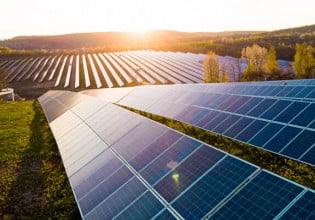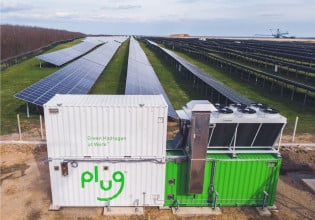Mitsubishi Electric Develops Multi-Crystalline Silicon Solar Cell With Conversion Efficiency Rate Of 18.6%
Mitsubishi Electric Corp. announced what it claims is a world record photoelectric conversion efficiency rate of 18.6% in a 150-millimeter square practical use multi-crystalline silicon solar cell, an improvement of 0.6% over the company’s previous record.
In a 150mm square practical-use multi-crystalline silicon solar cell, Mitsubishi Electric has achieved a conversion efficiency rate of 18.6% by adding a low reflectivity surface texture on the multi-crystalline silicon wafer, by optimizing the p-n junction to increase electric current generation and by developing a process to print electrodes on the surface of the silicon (metallization) to reduce shade loss of front grid electrodes. This technology contributes to higher efficiency in small installations such as narrow roofs.
To create highly efficient PV cells, it is necessary to reduce light reflectivity on the surface. While a honeycomb-textured structure is recognized as suitable for reducing surface reflectivity, it was a challenge to develop a way to apply this technology in production lines. Mitsubishi Electric claims that it has developed the world’s first method for fabricating a honeycomb structure on the surface of a 150mm square multi-crystalline silicon by combining laser patterning and wet etching.
Power generation also relies on the amount of light that approaches the p-n junction. A shallow, lightly doped emitter (n-layer) increases light gain and improves efficiency of power generation. With modified screens and front metal electrodes, Mitsubishi Electric claims that it reduced shading loss of front grid electrodes by 25% compared to previous cells.
Mitsubishi Electric will begin introducing this multi-crystal silicon cell technology into its mass-produced photovoltaic modules by fiscal 2011 (April 1, 2010-March 31, 2011). The company also states that it aims to increase the output of solar power generation systems by combining this technology with its PV inverters, which it says have the industry’s highest energy conversion efficiency rate.






